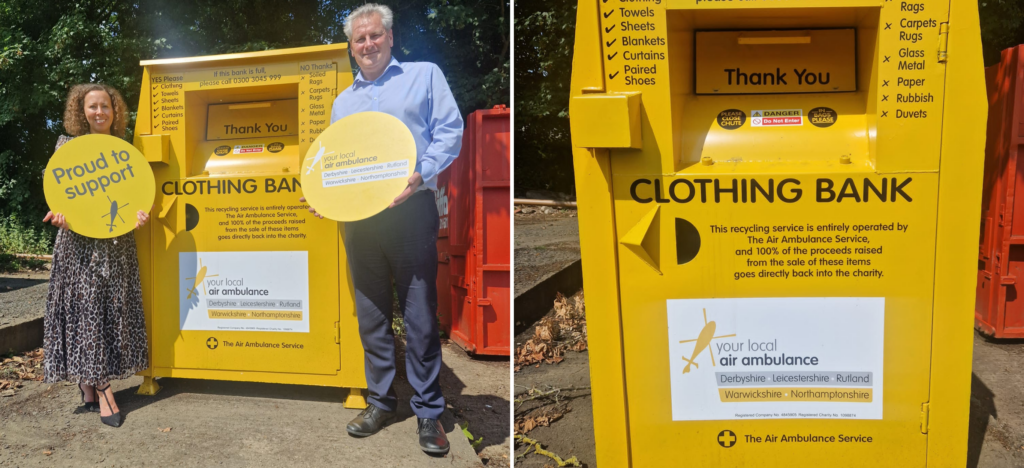News Hub
Lifesaving charity lifted up by Warwickshire learning and development centre

The Warwickshire & Northamptonshire Air Ambulance (WNAA) has received generous support from Warwickshire learning and development centre, Ashorne Hill.
Ashorne Hill is the natural home for learning and development in the heart of Warwickshire. Set in 35 acres of beautiful grounds, it offers an idyllic setting for learners and clients to feel inspired and get down to business without any distractions.
The team at Ashorne Hill recently chose to support the lifesaving air ambulance charity, by hosting one of its textile recycling banks on-site, to help raise the vital funds needed for each mission the service undertakes.
“We are so pleased we partner with the charity and host a clothing bank to not only support the Warwickshire & Northamptonshire Air Ambulance, but to also help the environment at the same time,” said Partnerships Manager at Ashorne Hill, Tracey Ashfield.
The hosted recycling bank on Ashorne Hill’s premises will enable clients and colleagues to drop-off donations of clothing, accessories, and small electrical items.
“We are incredibly grateful to the team at Ashorne Hill for hosting one of our clothing reuse banks on site, it is a great and easy way to work towards sustainability and divert textiles from landfill while helping our charity to raise the £1,700 needed for each mission,” explained TCAA Business Support Manager, Liz Kelly.
By adding more donation banks across its counties, the charity hopes to make donating more accessible so it can keep attending lifesaving missions, adding to the 50,000 missions already achieved over the last 20 years.
“We are proud to be able to help the Warwickshire & Northamptonshire Air Ambulance, the charity is close to my heart as its critical care crews attended to my mother, nine years ago,” said Ashorne Hill Managing Director, Jon West.
“We look forward to the continued partnership with the charity and hope to help keep the vital service operational through the donations received via the textile banks,” he added.

